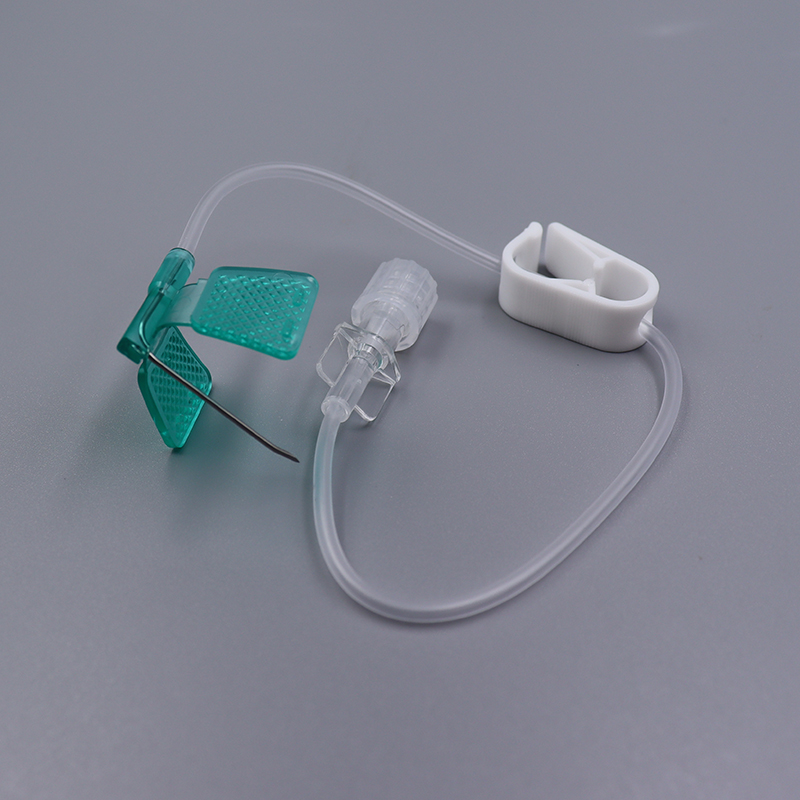For patients requiring long-term intravenous (IV) therapy, selecting the right medical device is crucial to ensuring safety, comfort, and effectiveness. Huber needles have emerged as the gold standard for accessing implanted ports, making them indispensable in chemotherapy, parenteral nutrition, and other long-term treatments. Their unique design minimizes complications, enhances patient comfort, and improves the efficiency of IV therapy.
What is a Huber Needle?
A Huber needle is a specially designed, non-coring needle used to access implanted venous ports. Unlike conventional needles, which can damage the silicone septum of a port over repeated use, Huber needles feature a curved or angled tip that allows them to penetrate the port without coring or tearing. This design preserves the integrity of the port, extending its lifespan and reducing complications such as leakage or blockages.
Applications of Huber Needles
Huber needles are widely used in various medical treatments, including:
- Chemotherapy: Essential for cancer patients receiving long-term chemotherapy through implanted ports.
- Total Parenteral Nutrition (TPN): Used for patients who require long-term intravenous nutrition due to digestive system disorders.
- Pain Management: Facilitates continuous medication administration for chronic pain conditions.
- Blood Transfusions: Ensures safe and efficient transfusion in patients requiring repeated blood products.
Benefits of Huber Needles for Long-Term IV Therapy
1. Minimized Tissue Damage
Huber needles are designed to reduce trauma to both the implanted port and surrounding tissues. Their non-coring design prevents excessive wear and tear on the port’s septum, ensuring repeated, safe access.
2. Reduced Risk of Infection
Long-term IV therapy increases the risk of infections, particularly bloodstream infections. Huber needles, when used with proper aseptic techniques, help lower the chances of infection by providing a secure and stable connection to the port.
3. Improved Patient Comfort
Patients undergoing long-term IV therapy often experience discomfort from repeated needle insertions. Huber needles are designed to minimize pain by creating a smooth and controlled entry into the port. Additionally, their design allows for extended dwell time, reducing the frequency of needle changes.
4. Secure and Stable Access
Unlike peripheral IV lines that may dislodge easily, a properly placed Huber needle remains stable within the port, ensuring consistent medication delivery and reducing the risk of infiltration or extravasation.
5. Ideal for High-Pressure Injections
Huber needles can handle high-pressure injections, making them ideal for chemotherapy and contrast-enhanced imaging studies. Their robust construction ensures durability and performance under demanding medical conditions.
Huber Needle Sizes, Colors, and Applications
Huber needles come in various sizes and colors to help healthcare providers quickly identify the appropriate needle for each patient’s needs.
The most common sizes, along with their corresponding colors, outer diameters, and applications, are presented in the table below:
| Needle Gauge | Color | Outer Diameter (mm) | Application |
| 19G | Cream/White | 1.1 | High-flow applications, blood transfusions |
| 20G | Yellow | 0.9 | Moderate-flow IV therapy, chemotherapy |
| 21G | Green | 0.8 | Standard IV therapy, hydration therapy |
| 22G | Black | 0.7 | Low-flow medication administration, long-term IV access |
| 23G | Blue | 0.6 | Pediatric use, delicate vascular access |
| 24G | Purple | 0.5 | Precise medication administration, neonatal care |
Choosing the Right Huber Needle
When selecting a Huber needle, healthcare providers consider factors such as:
- Needle Gauge: Varies depending on the viscosity of the medication and patient-specific needs.
- Needle Length: Must be appropriate to reach the port without excessive movement.
- Safety Features: Some Huber needles include safety mechanisms to prevent accidental needle sticks and ensure compliance with infection control protocols.
Conclusion
Huber needles are the preferred choice for long-term IV therapy due to their non-coring design, reduced infection risk, and patient-friendly features. Their ability to provide stable, reliable, and comfortable access to implanted ports makes them indispensable in modern medical practice. Healthcare professionals must ensure proper selection, placement, and maintenance of Huber needles to maximize patient safety and treatment efficacy.
By choosing Huber needles for long-term IV therapy, both patients and medical providers can benefit from improved outcomes, enhanced comfort, and reduced complications, solidifying their status as the best medical device for long-term IV access.
Post time: Feb-10-2025


